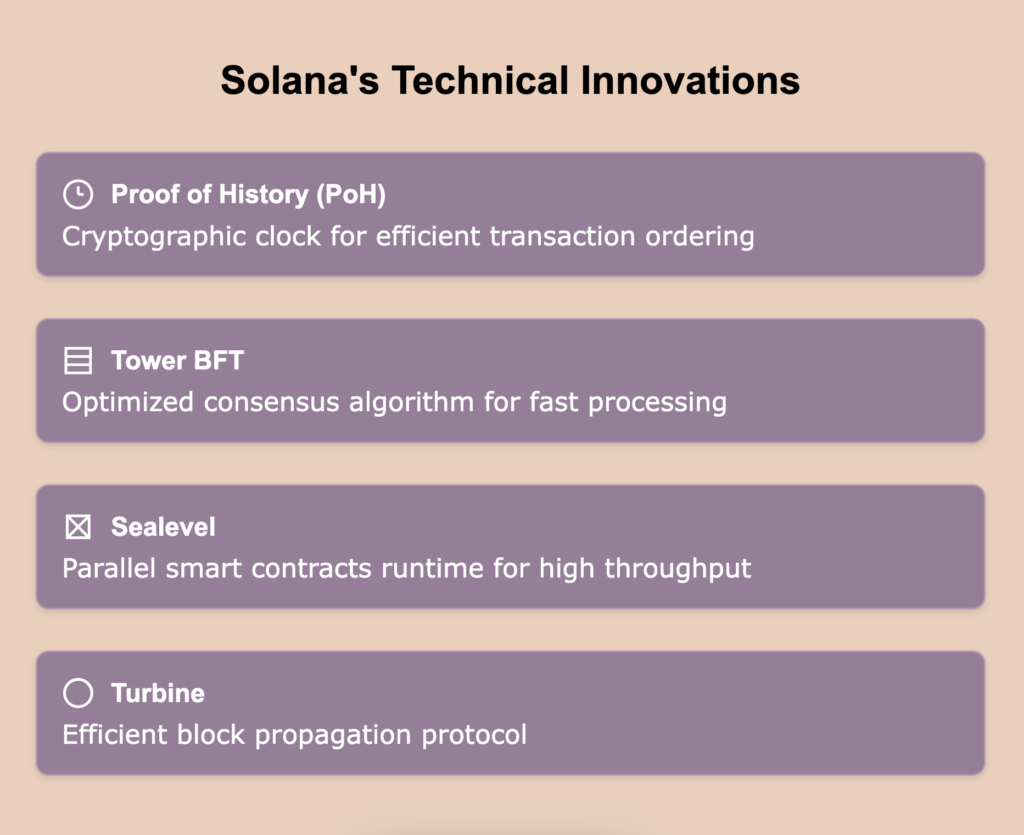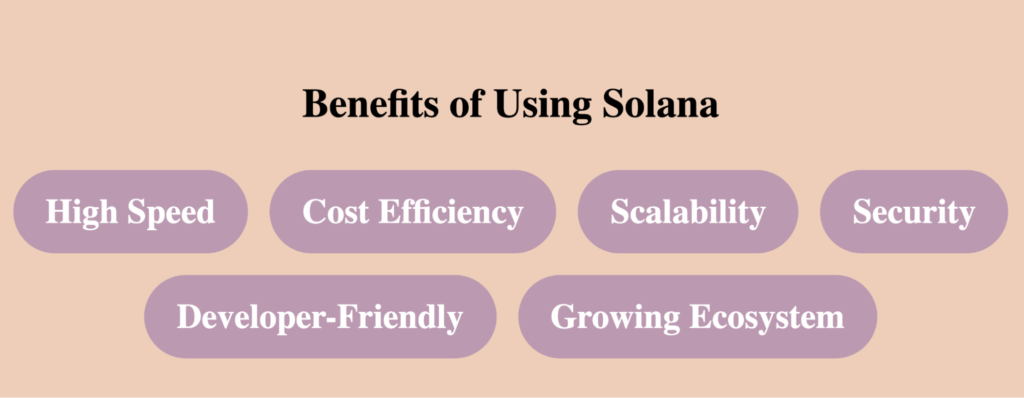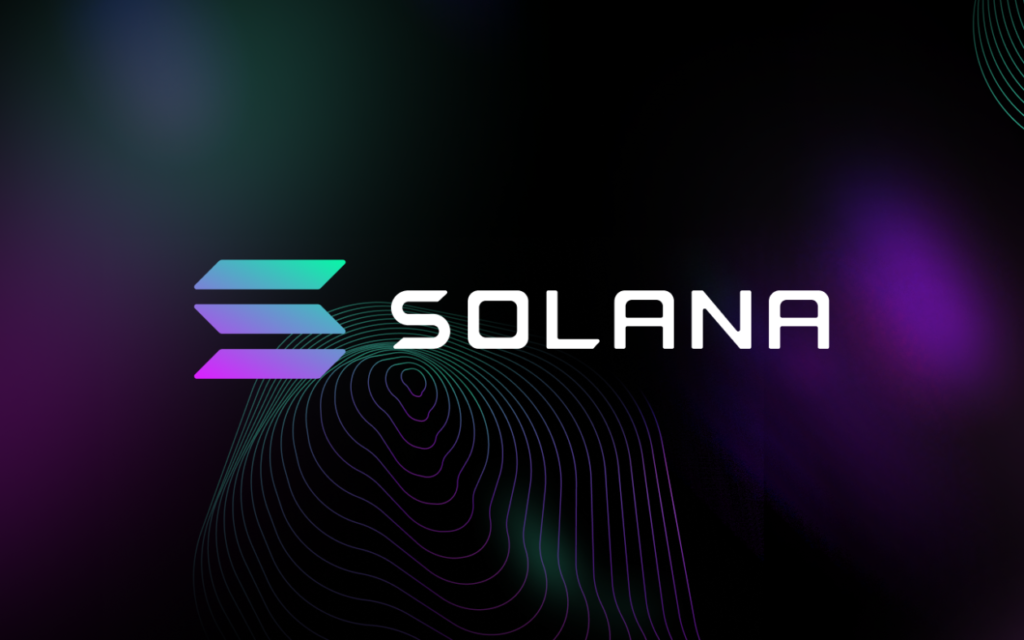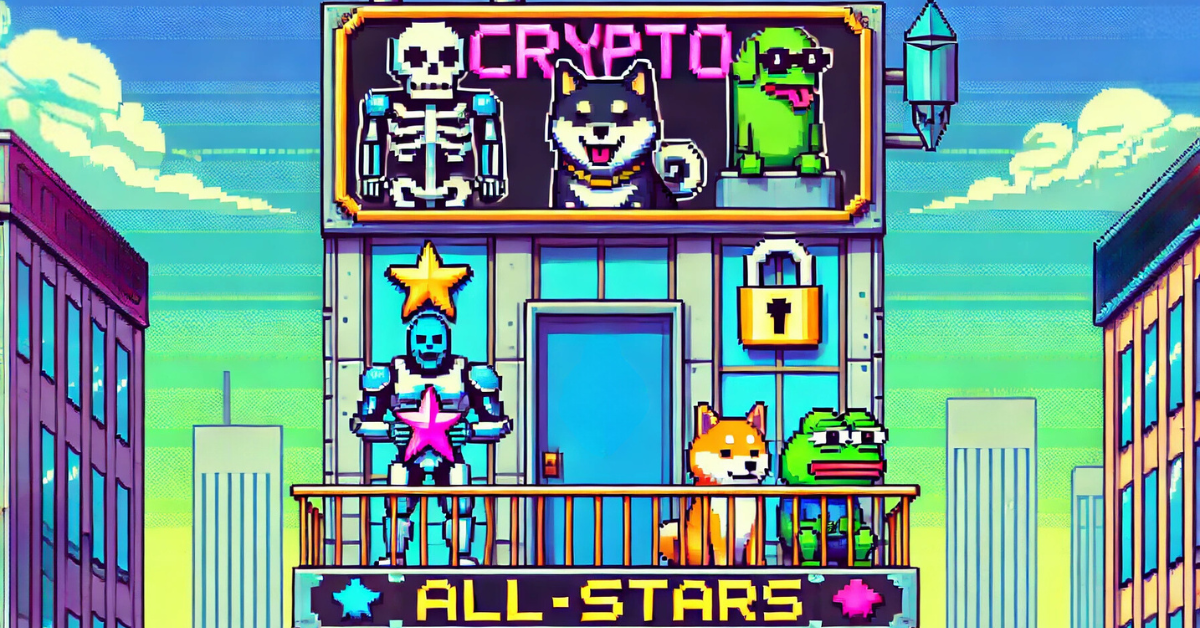If you’ve been keeping an eye on the crypto scene, you’ve probably heard the name Solana popping up more and more. But what’s all the fuss about?
In this guide we will get into what makes Solana tick, why it’s turning heads, and what it could mean for the future of blockchain technology. From its impressive speed to its growing ecosystem of apps and services, we’ll explore why Solana is becoming a hot topic in crypto conversations.
Why is Solana important for the Blockchain Ecosystem?
At the core of different industry motions toward decentralized, transparent, and secure solutioning in transactions and data management has been in blockchain technology. The huge challenge that most chains have to grapple with underlying blockchain technology is scalability. Increased usage and transactions in respective networks usually bring congestion, hence higher transaction fees and slower processing times.
Thus, high-quality architecture is what Solana is built with to handle a large number of transactions that do not impact speed and cost-effective results.
Anatoly Yakovenko created Solana in 2020 with the purpose of solving this scalability problem by inventing innovative technologies like Proof of History and Tower BFT consensus mechanisms.
Subsequently, the advances enable Solana to process more than 65,000 TPS at near zero fees—an inarguably pretty nice value proposition for developers and users.
What is Solana?
Definition and Origin
Solana is the fastest blockchain platform supporting smart contracts, decentralized applications, and cryptocurrency transactions. It was launched in March 2020 by blockchain startup Solana Labs, co-founded by Anatoly Yakovenko, a former Qualcomm engineer.
Yakovenko’s vision for Solana is one where it builds a blockchain that scales without giving up either decentralization or security, generally recognized limitations other popular blockchain networks face today.
Solana has an architecture optimized for the support of thousands of transactions per second, so it is one of the most efficient and scalable blockchains today. This state-of-the-art consensus algorithm from its very design relies on Proof of History, which time-stamps transactions in such a way to create a record of when events have occurred. All this makes Solana really incomparable in speed and efficiency.
Main Features
Solana has the following key features, making it stand out from among other blockchain platforms:
- High Throughput: Solana can sustain a processing capacity of over 65,000 TPS, making this blockchain network very fast. Because of the consensus process and the network’s distinct architecture, which permits transaction processing in parallel, it has a high throughput.
- Minimal Transaction Fees: Solana’s minimal transaction fees are one of its main benefits. It is ideal for high-frequency trading and microtransactions since it is so efficient that a transaction only costs a fraction of a cent.
- Scalability: Any growth in the number of nodes and transaction workload is handled by Solana’s horizontal architectural scaling, which prevents performance deterioration.This scalability is important to meet the rising demands of decentralized applications and services.
- Proof of History: The consensus algorithm for Solana timestamps transactions using the PoH, thus ‘creating’ an events timeline that is verifiable. This tutorial approach innovatively improves the efficacy and security of the network by decreasing the time it takes to reach consensus.
- Tower BFT: Solana utilizes the Tower Byzantine Fault Tolerance consensus algorithm, herself based on PoH, to achieve quick and efficient consensus. Hence, combining PoH with Tower BFT will rarely guarantee fast and secure transaction processing.
For those interested in exploring more about other blockchain technologies and tokens, check out our comprehensive guides on:
- Earn Crypto Browsing with Basic Attention Token (BAT)
- Stellar Coin: Connecting Economies with Ease
- Chainlink: Decentralized Oracle Network Explained
- MANA Coin: The Currency Powering Decentraland’s Metaverse
- NEAR Protocol: Scalability Through Sharding
Target Audience
Solana appeals to a wide audience:
Cryptocurrency Enthusiasts: Individuals interested in exploring new blockchain technologies and investing in promising crypto assets will find Solana to be a compelling option due to its high performance and growing ecosystem.
Developers: A resourceful and efficient project like Solana becomes very appealing for the development of decentralized apps. Its low fees and high throughput will enable developers to design more complex and user-friendly dApps without worrying about scaling issues.
It would attract both short-term traders and long-term holders to the strong performance and potential growth of Solana.
On the other side, in Solana, day traders can profit from price volatility, while long-term investors can do so from the prospects for scalability within this network or its mass adoption.
Solana and Blockchain Technology
Relationship with Blockchain
Solana is native to the blockchain landscape and offers solutions to some of the fundamental problems besetting existing blockchain networks. At its very core, blockchain technology represents something decentralized that works on many computers to bring security, transparency, and immutability to transactions.
Scariness has, however, been a big challenge for many blockchains—especially those having succeeded in decentralization and security but at a cost to their speed.
In these regards, Solana attempts to tackle problems of scalability through new architecture and consensus mechanisms. Introduces Proof of History, whereby Solana has this recording of the past that indicates some event has taken place at the correct moment.
This historical record, in combination with a leaderless proof-of-stake mechanism called the Tower BFT consensus algorithm, gives Solana the ability to process transactions quickly and effectively without compromising security or decentralization.
Technical Advantages
Solana deploys a myriad of technical innovations, such as those that give native support to high throughput and low transaction costs, thereby making it enterprise-ready. These include:
Proof of History (PoH): PoH is a cryptographic clock that timestamps each transaction, creating a historical record that is easily verifiable. This allows the network to order transactions efficiently and securely, reducing the time needed to reach consensus.
Tower BFT Consensus Algorithm: This is a variant of the Practical Byzantine Fault Tolerance algorithm optimized for PoH. It exploits the historical record generated by the PoH to achieve fast consensus with lower communication overhead between nodes.
Turbine: This is Solana’s block propagation protocol, breaking its data down into small packets and distributing them across a network to ensure efficient and reliable transmission even at high loads.
Gulf Stream: It’s a mempool-less transaction forwarding protocol that is a core part of Solana, pushing transactions to validators before they are included in a block to reduce confirmation times and improve network efficiency.
Sealevel is parallel smart contracts runtime to Solana, which allows running many smart contracts in parallel. It contributes to increased network throughput by better utilization of available computational resources.
Pipelining: Solana deploys pipelining to optimize transaction validation in its processes further. This is actually pipelining, breaking down the transaction validation process into multiple stages, each of which can be running and executed simultaneously to provide higher-scale and higher-efficiency boosts to the network.
Benefits of Using Solana
Solana’s technical advantages carry a number of important associated benefits for ultimate users and developers:
- High throughput: Solana supports over 65,000 transactions per second, ensuring a much higher transaction speed and the best experience for fast processing of decentralized applications—ideal in high-frequency trading.
- Cost Efficiency: Lowering transaction fees, Solana minimizes the financial barrier owed by users and developers, making it less costly for the conduct of transactions and deployment of decentralized applications—which encourages further adoption.
- Scalability: The decentralized nature of Solana’s offered architecture enables decentralization from sacrificing scale. As the network increases in size, it can take on more and more transactions and becomes apparent with more nodes to ensure that performance and reliability will never be compromised.
- Security: Solana ensures sturdy security measures with the help of PoH and Tower BFT’s innovative consensus mechanisms.
- Developer-Friendly Environment: Solana is home to a very fertile ecosystem of tools and resources. It offers developers thorough documentation, development kits, and an engaging community that makes developing and deploying decentralized applications much easier on the Solana network.
- Ecosystem Growth: This is an overall reflection that the ecosystem powering up on Solana is growing, with the increased number of projects and applications already being created. This augments more development and draws strength into the network to attract developers, users, and investors.
Unique Features of Solana
Solana stands out bright in the space due to all these unique features and added innovative blockchain technologies.
- Low Transaction Fees: Transaction fees are kept really low due to the high performance built into Solana’s architecture, which is a big positive and further acts as a great attraction to its users and developers. Affordability begets usability for an application class, ranging from micro- to high-frequency trading on the Solana blockchain.
- High Processing Speed: With an ability to handle 65,000 TPS, Solana was far ahead of other blockchain networks. This has enabled very high-speed processing, ensuring users have transactions confirmed quickly and with no stoppages in service delivery.
- Proof-of-History (PoH): The PoH mechanism in Solana is related to the creation of an actually verifiable progression of events within the network, which significantly improves efficiency and security. This is probably why, with such an innovative consensus scheme, Solana achieves not just reasonable but high performance.
- Sealevel: Solana’s parallel runtime for smart contracts allows multiple smart contracts to execute at the same time. This parallel processing capability increases the throughput of the network, allowing for more complex applications to be supported.
- Turbine and Gulf Stream: ensure that data transmission and transaction forwarding are done efficiently, boosting Solana’s performance further with reliability.
User Experience and Technical Synergies
The unique features and innovations of Solana offer a variety of advantages in user experience, creating synergy with other technical improvements in blockchain space.
- Seamless User Experience: High-speed processing, combined with low transaction fees, will make it feasible for users to communicate with the Solana network. It presents a seamless experience that will be the key to mass adoption of decentralized applications and services.
- Developer Benefit: Developers benefit from the scalable and efficient infrastructure of Solana, through which they can develop more complex and user-friendly applications. Availability of Done-in-parallel processing with Sealevel and efficient data transmission protocols like Turbine and Gulf Stream further enhances the experience for the developer community.
- Ecosystem Integration: Technical synergism between Solana and other blockchain technologies or protocols makes it easily integrate into any existing blockchain ecosystem. Interoperability is therefore able to enhance the functionality of Solana and make it more appealing to developers and users alike.
- Technical advantages: Solana’s technical efficiencies and innovative features give it strategic positioning in the blockchain space. Given the capacity for speed, volume, and low costs with regard to transactions that this network is able to offer, appropriate high-performance applications or enterprise solutions would fit well in this setting.
- Future-Proofing: In developing Solana, much attention was paid to ensuring its scalability and performance so as to accommodate future growth and advancements accruable in the blockchain space. The future-proofing of Solana makes it very feasible and long-term viable for investment and development.
Technical Aspects of Solana

Proof of History (PoH) and Tower BFT
- Proof of History: This cryptographic clock stamps each and every transaction, therefore creating a historical record of the transactions that is verifiable. This has been a mechanism specific to Solana in the ordering of transactions with high efficiency and security while drastically bringing down time to reach consensus. PoH improves performance on the network by providing a uniform and reliable way to check the succession of events.
- Tower BFT: This is a consensus algorithm that borrows elements from PoH to achieve the same consensus but quickly. Tower BFT is an optimized version of the normally implemented Practical Byzantine Fault Tolerance algorithm for Solana’s high-speed network. Each node communicates less with other nodes using Tower BFT; therefore, it enables faster and more secure transaction processing overhead among nodes, allowing for faster and more secure transaction processing.
Innovations: Sealevel and Turbine
Solana brings a lot of unique technologies to the table that set it apart from other blockchain networks.
Sealevel
This is Solana’s parallel smart contracts runtime, which allows it to execute many smart contracts in parallel. Such parallel execution increases the network’s capability—that is, higher throughput—and thus supports more complex and sophisticated decentralized applications. On the other hand, Sealevel improves the usage of all available computational resources while making sure that huge volumes of transactions cannot choke the network.
Turbine
This is the block propagation protocol of Solana, breaking down the data into smaller packets and spreading them over the network. Hence, this method ensures effective reliability and efficiency of data transfer at large loads, significantly reducing bandwidth usage for block propagation and enhancing the overall performance and scalability of the network.
Solana is a blockchain leader in technical innovation and cutting-edge architecture. Bringing together all powers of Proof of History, Tower BFT, Sealevel, and Turbine, Solana becomes a high-performance platform driving towards fulfilling the needs of developers alongside satisfying user and investor requirements.
These advanced technical characteristics make Solana a versatile solution that scales across an enormous array of use cases, from DeFi to NFTs and everything in between.
Who Should Invest in Solana?
Investor Profiles
Solana’s unique features and faith in its growth potential make it an attractive investment deal for various types of investors. Here are the major profiles of investors who may get interested in Solana:
Day Traders
In a very volatile coin with dynamic trading, Solana should be perfectly suitable for any day trader. You get ample opportunities to make short-term gains with the price swings occurring every now and then in this ever-changing trading environment. Being a day trader, you will benefit both from the liquidity within the Solana market itself and the wide array of trading pairs available across many exchanges.
Long-term Holders
Any investor willing to hold Solana in the long term shall consecutively realize enormous growth since it triples in value upon continuous innovation and the broadening of its ecosystem. Long-term holders can benefit from network scalability and growing adoption across the blockchain space.
Institutional Investors
The high performance and technical robustness of Solana act as an attractor to institutional investors. One of the goals is to efficiently handle large volumes of transactions and meet the needs and requirements of institutional-grade applications and financial services.
Developers and Entrepreneurs
Anyone seeking to develop and deploy decentralized applications should consider investing in Solana. On a more technical note, owning SOL tokens is important for developers who need their decentralized application developed and executed on a certain network—Solana—with high-threshold, low-fee transactions.
Crypto Lovers
For enthusiasts of blockchain technology and cryptocurrencies, Solana presents a brilliant case for investment. With the new innovative approach and ability to disrupt the blockchain industry, it has all the ingredients to pique the interest of crypto lovers.
Benefits for Day Traders and Long-term Holders
Investing in Solana offers distinct advantages for both day traders and long-term holders:
Day Traders
- Volatility: The price swings of Solana open a lot of avenues to profit with short-term trading strategies.This high trading volume would allow traders in SOL to easily get in and out of their positions without unduly affecting the market price.
- Trading Pairs: Most of the major exchanges have started listing Solana with many trading pairs, which are literally going to be very instrumental in terms of flexibility and turning into a perfect platform for implementing one’s trading strategy.
Long-term holders
- Scalability: It is one of the key features of Solana’s scalable infrastructure, which makes a whole ecosystem of services and applications that could contribute to the long-term appreciation of its worth.
- Ecosystem Growth: With more projects and developers focused on Solana, demand for the SOL token will continue to increase over time.
- Innovation: Solana has been involved in continuous innovation and development, so it remains at the frontline of blockchain technology. That makes this cryptocurrency very promising as an investment vehicle for the long run.
Why Invest in Solana?
- High Performance: Solana can process over 65,000 transactions per second, making it one of the fastest blockchain networks, further enhancing its high performance required to back up complicated and high-frequency applications.
- Low Transaction Fees: The low fees that Solana requires for transactions make the system much more user-friendly to both users and developers. More reasonable transaction costs encourage wider adoption and usage.
- Large and Active Developer Community: Solana has an active and vibrant developer community that contributes to its growth and progress. This becomes fundamental to the long-term sustainable development of a network like this.
- Growing Ecosystem: Solana’s ecosystem grows drastically. A number of dApps, DeFi projects, and NFTs on the platform are being built. This will further increase the utility and demand for SOL tokens.
- Strategic partnerships: Solana has been involved in various strategic partnerships with different projects and organizations, therefore stamping its mark in the blockchain space. These are very important for improving its credibility and prospects for further growth.
- Future Prospects: Having initially focused on scalability and performance, Solana is well placed in terms of the innovative road ahead that lies in store for blockchain technology. As the network grows and matures, its value and importance are bound to increase manyfold.
Solana is one such rarest opportunity that one could ever have to be part of a high-performance blockchain network with enormous growth potential. Be it the day trader looking to make money off unrealized short-term gains or the long-term holders desiring value appreciation, Solana makes a strong case for investment.
Pros and Cons of Solana
Summary Table
| Pros | Cons |
| High transaction throughput | Relative newness and less proven track record |
| Low transaction fees | Potential regulatory challenges |
| Growing ecosystem | Competition with other blockchains |
| Strong developer support | Technical complexity for new users |
Balanced View of the Advantages and Challenges
While Solana has many benefits, there are a number of challenges an investor needs to be aware of:
Pros of Solana
- High Transaction Throughput: Being above 65,000 TPS, Solana is among the fastest blockchain networks out there, better positioned to help the build of high-frequency and complex applications.
- Low Transaction Fees: Due to the efficiency of the network, this will enable the offering of the lowest transaction costs to users and developers. This low cost is a significant advantage to be gained for applications with high-frequency transactions.
- Growing Ecosystem: Most importantly, Solana’s ecosystem has dramatically improved with the diversity of projects and applications that are being built on top of the platform—only improving its utility and increasing demand for the SOL token.
- Strong Support from the Developers: One of the efficiencies credited to Solana is its vibrant, very active developer community; this very feature leads to continuous innovation and development. Such strong support is vital in the sense that it forms part of the characteristics that will define the sustainability and future growth of said network.
Cons of Solana
- Relative Newness: Solana is, compared to some of the more established players like Bitcoin and Ethereum, a relatively new blockchain platform. Regulatory Challenges: Like every other cryptocurrency, Solana cannot be said to be clear of this regulatory scrutiny. These changing regulations may alter the way of working and hence, finally affect adoption.
- Competition: Solana competes with other blockchain networks that also look to solve scalability issues. This can impact the position of Solana’s market and its implementation.
- Technical Complexity: The cons of Solana, in as much as it comes with huge technical advantages, is the complexity involved in using this technology. One may need to be at a very steep learning curve to understand and harness all the features laid down in the network.
Future of Solana
Potential Developments
Solana’s future is shaped by several potential developments that could enhance its value and adoption:
Greater Adoption: The more developers and projects realize the benefits that Solana has in store, the greater the adoption the network is bound to witness. This would manifest in a wider range of dApps, DeFi projects, and NFTs.
More dApps and Services: Due to the constant development and deployment of new dApps and services, Solana’s ecosystem will increase. The applications will naturally attract more users, which implies that further growth in demand for the SOL token can occur.
Integration with financial systems: Due to its high performance and great scalability, Solana would suit integration with traditional financial systems. This will be capable of bridging the gap between traditional finance and blockchain technology, hence opening up new use cases and markets.
Technological Innovations: Innovation does not seem to end for Solana, and with it comes the promise of further evolution in the future—more so in terms of performance, security, and scalability—with further potential technological advancements.
Market Role and Future Prospects
The role of Solana in the cryptocurrency market is changing; soon, it will prove to be one of the biggest players due to its technical advantages and growing ecosystem.
- Market Leader: High performance and low transaction fees made Solana to take a lead in the blockchain space, which gives it a high potential of qualifying as a leader. This feature makes it responsive, suitable for many applications.
- Enterprise Adoption: Scalability and efficiency are two major features that make Solana quite apt for large-scale applications. As more businesses begin to seek blockchain solutions, the likelihood of its adoption by enterprises is very high.
- Institutional Interest: Increased interest in Solana from institutional investors and asset management firms indicates that it has the potential to become one of the biggest classes of assets. Institutional adoption can drive further growth and stability into Solana’s market value.
- Community and Ecosystem Growth: Solana’s community and ecosystem are destined to grow, further reinforcing market position. High, active community is a big contribution factor in the innovation, development, and adoption stages of the network.
- Regulatory Developments: It has been a dynamically changing regulatory landscape for Cryptocurrencies. The future growth and success of Solana would therefore, depend on how it is able to navigate and adapt itself through emerging changes in regulations. Positive regulatory developments can enhance its legitimacy, thus attracting more investors.
On the other hand, Solana projects quite brightly in its future prospects, driven by strong technical capabilities, a developing ecosystem, and potential large-scale adoption. With the blockchain industry moving disruptively, Solana puts itself in a very good position to take up emerging opportunities and assert its spot as one of the top blockchain platforms.
Solana ETF: Prospects and Challenges for the Future
Recently, large-scale asset management firms like VanEck have been coming forward with applications to list spot ETFs for Solana on the U.S. Securities and Exchange Commission. This followed the approval of Bitcoin ETFs and the expectations of Ethereum ETFs, making Solana the potential next big crypto ETF.
Potential Benefits of a Solana ETF

An ETF on Solana might work out to provide a bunch of benefits:
Better Accessibility for Institutional and Retail Investors
The ETF would provide both institutional and retail investors much easier access to Solana without their needing to buy and hold SOL tokens in their accounts. More important, better accessibility can further increase investments in Solana.
More Liquidity and Visibility to the Solana Ecosystem
SOL token liquidity, coupled with Solana ecosystem visibility, would greatly increase the scope of any Solana ETF proposed. This greater liquidity could decrease price volatility, making Solana a more stable manner of investment.
Value Potential Growth
Some of the market analyses show that an ETF approval of a Solana could bring gigantic growth in SOL token value. This increases the rise in demand from institutional to retail investors, which will benefit current holders by driving up prices.
Regulatory Challenges
There are, however, key regulatory challenges to surmount despite the eagerness:
- SEC Designation: Solana, meanwhile, has been designated by the SEC as an unregistered security, and such classification does raise approval risks for a Solana ETF. ETF success absolutely requires regulatory clarity and compliance.
- No Futures Market: Solana has no regulated futures market compared to Bitcoin and Ethereum. So, this makes it difficult for an ETF to establish and manage its underlying assets.
- Regulatory Clarity: The new evolving landscape in regulations within digital assets requires better clarity concerning the treatment of assets like Solana. The regulatory environment should perfectly support the introduction of new financial products, among them being ETFs.
Apart from VanEck, other firms looking to bring Solana ETFs to the market include 21Shares. The happenings essentially created a source of proof that institutional interest in Solana, as a class of assets, is on an upward trajectory.
In effect, having multiple asset management companies within the discussion underscores that something big is around Solana and suggests a growing demand for crypto investment products.
Future Prospects
An approved Solana ETF would be based on many factors, among them:
- Evolution of the Regulatory Framework: Amendments in the regulatory environment in the US and across other nations will influence the approval process of the Solana ETFs. Regulatory backing, as well as more defined general clarity on various regulatory clauses, are called for in the launching of such financial products.
- Potential Shifts at the Helm of the SEC: Leadership transitions for regulators can mean a difference in destiny for novel financial products. With the right leadership for them, Solana ETFs could get the green light much faster.
- Growth and Maturation of the Solana Ecosystem: The continuous growth and development within the Solana ecosystem shall make it a harder place in the market and, in turn, escalate calls for an ETF. Mature and strong ecosystems are more likely to be guessed by regulatory approval and investor interest.
According to the analysts, change in the U.S. administration would have moved things faster toward the approval of Solana ETFs. As thrilling as the idea of a Solana ETF is, so indeed, is it something we have to be quite wary of?
Chances are the regulatory hurdles may be high, though with the growing interest from institutional investors and increased development within the Solana ecosystem, new investments could be in the offing in the short term.
Conclusion
To wrap things up, Solana has really made a splash in the crypto world. It’s fast, cheap to use, and has a lot of cool projects being built on it. While it’s still pretty new compared to the big guys like Bitcoin and Ethereum, Solana is definitely turning heads.
If you’re thinking about getting into Solana, whether as an investor or a developer, there’s a lot to be excited about. The speed and low fees make it great for all sorts of applications, from trading to games. And with big companies looking into creating Solana ETFs, it could become even easier for people to invest in the future.
Investment Recommendations
Solana offers a great opportunity to invest in due to its high performance and growing ecosystem. It cannot close its eyes to the risks and regulatory hurdles involved. Whether a day trader, long-term holder, or institutional investor, Solana has a number of unique advantages that can align with your investment strategy. Its potential for higher growth and value appreciation is huge as it continues to evolve and increase.
FAQ Section
What is Solana used for?
Solana is used for a variety of applications, including decentralized apps (dApps), crypto exchanges, and games, benefiting from its high speed and low fees.
How can I buy Solana?
Solana can be purchased on several major cryptocurrency exchanges by setting up an account and trading fiat currency or other cryptos for SOL.
What makes Solana unique?
Solana stands out due to its high throughput and low cost, supporting over 65,000 transactions per second, making it ideal for enterprise-level applications.
What are the benefits of using Solana?
Solana offers high performance, low transaction fees, scalability, and strong developer support, making it a preferred choice for various blockchain applications.
Who should invest in Solana?
Solana is suitable for day traders, long-term holders, institutional investors, developers, and crypto enthusiasts looking for a high-performance blockchain platform.
Why is Solana so special?
One of the most exciting features of Solana is its speed and scalability. It is one of the few protocols that boast over 1000 TPS because of its genuine web-scale blockchain features. In addition, Solana supports at least 50,000 TPS, which is about 3800 times faster than Ethereum and 10000 times faster than Bitcoin.
Does Solana have a future?
Solana provides a compelling platform for NFT activities, positioning it as a strong contender for leading the market in 2024. “It has an opportunity to end 2024 with the largest majority of NFT volume if it can continue its recent trajectory.






